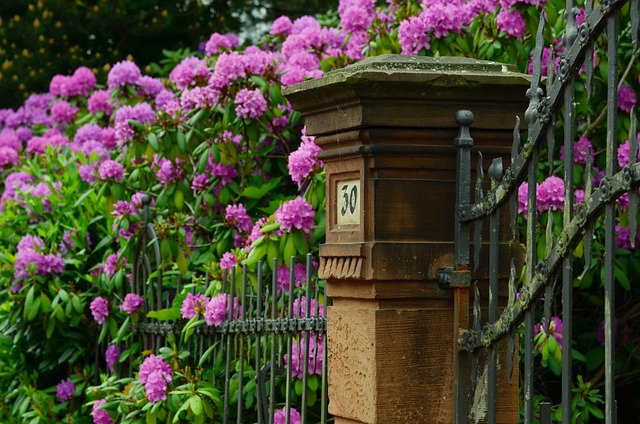Fence Staining and Sealing: A Comprehensive Guide to Revitalizing Your Wooden Fences
Maintaining the allure of your outdoor space is essential, and a beautifully stained and sealed wooden fence plays a pivotal role. This guide delves into the art of fence staining, offering insights on understanding its benefits, preparing your fence, selecting the perfect color and application methods, and ensuring long-lasting protection through sealing. With practical tips on maintenance, you’ll transform your wooden fences into striking focal points that enhance both functionality and aesthetics.
- Understanding Fence Staining: Benefits and Types
- Preparing Your Wooden Fence for Staining
- Choosing the Right Stain: Color Options & Applications
- Sealing Your Stained Fence: Protection and Longevity
- Maintenance Tips for Long-Lasting Fence Beauty
Understanding Fence Staining: Benefits and Types
Fence staining is an essential process for maintaining and enhancing the beauty of wooden fences. It involves applying a protective finish to the wood, which offers numerous advantages. Firstly, it shields the fence from the elements, including UV rays, rain, and snow, preventing weather-related damage and ensuring the longevity of the structure. Secondly, staining provides an opportunity to transform the visual appeal of your fence. Various colors and finishes are available, allowing you to match your fence’s aesthetic with your preferred style, be it a natural wood look or a bold, vibrant hue.
There are two primary types of fence staining: semi-transparent and solid. Semi-transparent stains allow some light to pass through, enhancing the wood grain while offering moderate protection. This option is ideal for those who want to preserve the natural beauty of their fence with added weather resistance. Solid stains, on the other hand, provide complete coverage, blocking light and creating a more uniform color. They offer superior protection against water and UV damage but may obscure the wood’s natural patterning.
Preparing Your Wooden Fence for Staining
Before applying any stain or sealer, it’s crucial to prepare your wooden fence properly. Start by sweeping and cleaning the fence to remove any dust, dirt, or debris. Use a pressure washer if necessary to ensure a thorough clean. This step is vital as it allows the stain to adhere better to the wood.
Next, inspect the fence for any repairs needed. Fill in any cracks or holes with a suitable wood filler and sand the surface smooth once dry. Remove loose or peeling paint, as well, using a scraper or sandpaper. By taking these preparatory measures, you’ll achieve a longer-lasting stain and a more even finish on your wooden fence.
Choosing the Right Stain: Color Options & Applications
When choosing a fence stain, color is a primary consideration. Stains come in a wide range of shades, from natural woods to bold, dark tones, offering various aesthetic options for every taste and landscape style. Dark colors add depth and drama to your wooden fence while lighter hues can enhance the natural beauty of the wood grain.
While color is essential, application method also plays a crucial role. Some stains are designed for quick, even coverage using a brush or roller, while others require a sprayer for a more uniform finish. Consider the size and style of your fence; intricate designs may call for a more precise application tool, whereas larger, simpler fences can often be stained effectively with a gallon container and standard equipment.
Sealing Your Stained Fence: Protection and Longevity
After staining your wooden fence, the next crucial step is sealing it. Sealing acts as a protective barrier against the elements, including UV rays from the sun, rain, and snow. It not only enhances the aesthetic appeal of your stained fence but also significantly extends its lifespan. A good sealant creates a shield that prevents moisture penetration, which can cause rot or warp over time.
Choosing the right sealant is key. Water-based sealants are popular for their low odor and ease of application, while oil-based options offer superior durability in harsher conditions. Regular sealing, typically every one to three years depending on exposure, ensures your fence remains vibrant and robust, protecting your investment for years to come.
Maintenance Tips for Long-Lasting Fence Beauty
Regular maintenance is key to preserving the beauty and longevity of your stained and sealed wooden fence. Start by cleaning the fence annually to remove any built-up dirt, mold, or mildew using a soft brush and mild detergent. This ensures that your stain adheres properly and prevents premature fading.
After cleaning, reapply a fresh coat of sealant every two years to create a protective barrier against the elements. During extreme weather conditions, inspect the fence for any signs of damage, such as cracks or splintered wood, and make repairs promptly. Keep an eye out for stains caused by insects or bird droppings, treating them immediately to avoid long-term discolouration.
